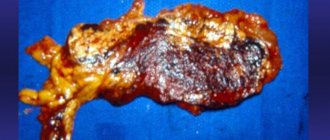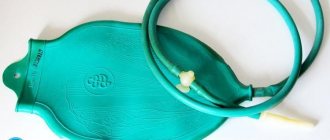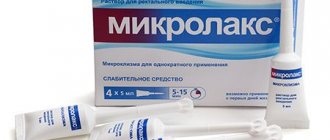What are enemas?
Constipation is a condition in which the natural movement of your stool is slowed down, making it hard, dry and difficult to pass.
For many people, this can be a chronic problem that requires intervention such as an enema or a rectal laxative. Enemas may also be prescribed to flush out the colon before certain diagnostic tests or surgeries. Before these procedures, your bowels should be empty to reduce the risk of infection and prevent the passage of stool.
According to some enema proponents, when waste builds up in your colon over time, it leads to conditions such as depression, fatigue, headaches, allergies and irritability, and using enemas can help.
While it is true that many people with chronic constipation experience depression and other psychological symptoms, there is no evidence that waste accumulation directly leads to the other aforementioned effects (,).
There are two main types of enemas - cleansing and retention.
Cleansing enemas
Cleansing enemas are water-based and are designed to hold liquid inside for a short period of time to cleanse the colon. After the injection, the liquid is retained for a few minutes until your body gets rid of it, as well as loose materials and feces in your intestines.
Here are some of the most common cleansing enemas (, ):
- Water or saline solution . The least irritating of all the options, water or saline—salt water that mimics the concentration of sodium in your body—is used primarily for its ability to dilate the colon and mechanically promote bowel movements.
- Epsom salts (magnesium sulfate) . This is similar to a water or saline enema, but magnesium-rich Epsom salts are said to be more effective at relaxing the intestinal muscles and relieving constipation.
- Sodium phosphate . This is a simple enema that works by irritating your rectum, causing it to expand and release waste.
- Lemon juice . Lemon juice mixed with warm, filtered water is said to balance your body's pH while cleansing your colon.
- Apple vinegar . Proponents say mixing apple cider vinegar with warm, filtered water can quickly cleanse the colon and provide other antiviral healing effects on your digestive system.
- Soap foam . Adding castile soap or other mild soap with minimal additives to water slightly irritates the intestines, which helps to quickly eliminate stool.
Retention enemas
Retention enemas are designed to be retained in the intestines for an extended period - usually at least 15 minutes - before being eliminated. Retention enemas can be water- or oil-based, which softens the stool and makes bowel movements easier.
Here are some of the most common retention enemas (, ,):
- Coffee . Coffee enemas are a mixture of brewed caffeinated coffee and water that are believed to help remove bile from the colon. This type of enema was popularized by Max Gerson, a doctor who used them to treat cancer patients.
- Mineral oil . This type of enema works primarily by lubricating stool inside the colon, sealing it with water, and promoting its removal.
- Probiotic . Mixing probiotics with water can cleanse your gut while helping colonize beneficial gut bacteria. Lactobacillus reuteri enemas have been shown to reduce inflammation in children with ulcerative colitis.
- Herbal . Some people use garlic, catnip infusion, or red raspberry leaf to prepare herbal enemas with supposed infection-fighting and anti-inflammatory properties.
Conclusion:
Enemas are rectal injections of liquid that are intended to cleanse the intestines or treat chronic constipation. The two main types - cleansing and retention enemas - can be performed using different solutions and can be administered at home.
Tips for choosing
Today in pharmacies you can buy different types of enemas - they are of different sizes, reusable and disposable. For cleansing enemas, reusable ones with a volume of at least 2 liters of solution are better suited. It is usually made of rubber and will last quite a long time.
The disadvantage of rubber is that the solution in it cools quickly; moreover, this material is difficult to clean and is not suitable for herbal infusions. A small volume pear-shaped enema cannot be used for weight loss at all; it is used only for medical purposes.
The disadvantage of the pear is not only its small volume; when you press it, the solution will quickly flow into the rectum, while the enema will shrink and quickly suck the entire contents of the intestine along with the liquid back. The best option for cleansing the intestines is the well-known Esmarch mug. It can be made of glass, enamel-coated metal or rubber. Holds volume up to 2 liters. It is important to know how to properly perform a cleansing enema at home, otherwise discomfort may occur. The enema liquid should be approximately 36 0.
The procedure is done like this:
- fill the Esmarch mug with the required volume of solution;
- the tap on the hose must be closed;
- fix the mug at a height of 1 m from the floor;
- lubricate the hose tip with Vaseline;
- lie on your side, placing an oilcloth under you;
- insert the enema tip into the anus and open the tap;
- wait until all the solution has poured out;
- lie on your back for 15 minutes.
It is important to wait as long as possible after the enema; the longer you keep the solution inside, the better the cleansing effect will be. Then you need to visit the toilet. Loose stools will occur more than once and you should be prepared for this.
Potential benefits of an enema
Enemas can treat constipation and cleanse the colon. However, many people choose to use enemas for other purported therapeutic effects (,).
Some advocates claim that enemas can support weight loss, remove toxins and heavy metals from your body, and improve your skin health, immunity, blood pressure and energy levels.
However, there is limited evidence to suggest that enemas are effective for these purposes or that they benefit everyone who uses them. Most of the evidence supporting their effectiveness is anecdotal, despite their widespread use in modern medicine ().
Enemas appear to be most effective in treating chronic constipation in a medical setting, although they come with many risks, especially when self-administered at home (, ).
Conclusion:
Enemas can be effective in cleansing the colon and treating chronic constipation, but most evidence for their benefits is anecdotal rather than scientifically sound.
Potential enema harms, side effects and dangers
Although enemas can cleanse your colon, you should consider their risks and take certain precautions before using them.
May disrupt your body's natural balance
Enemas can disrupt your intestinal flora and the electrolyte balance in your body.
Research shows that enemas used in preparation for medical procedures significantly disrupt intestinal microflora, although the effect is temporary. However, enemas that are divided and administered in two stages appear to have less of an impact on the microbiome (, ).
Electrolyte imbalances have been observed with various types of enemas, such as large-volume suds enemas and those containing minerals.
For example, there have been reports of magnesium sulfate enemas causing death from magnesium overdose. In another case, an elderly man died from severe electrolyte imbalance caused by two sodium phosphate enemas (, ,).
Other reports note that excessive use of colonic enemas can lead to severe dehydration, which can be fatal ().
Enema solutions can damage your intestines
Lemon juice, apple cider vinegar, and coffee enemas are highly acidic, and there is little scientific evidence to support their effectiveness or safety.
Moreover, evidence suggests that their acidity and composition can damage your intestines and lead to rectal burns, inflammation, infections and even death ().
Likewise, there are reports of children given acidic hydrogen peroxide enemas experiencing intestinal inflammation, bloody diarrhea, vomiting, and long-term complications ().
Additionally, in some people, herbal enemas caused internal bleeding that required blood transfusions and colon removal ().
Dirty or improperly used instruments can cause infection and damage
If you are administering an enema yourself at home, it is very important to make sure that the tools you use are sterile, meaning they are free of harmful germs. Using dirty tools increases the risk of contracting a potentially dangerous infection.
Improper use of the instrument may also cause physical damage to the rectum, anus, or colon. Research suggests that bowel perforation is not a rare complication of frequent enema use, which can put your internal organs at risk for infection (, ,).
Sterile enema kits, which usually include an esmarch cup, tube, solution, and sometimes an enema bulb, can be found online or at many local pharmacies. They are sold with instructions for cleaning and safe use.
Conclusion:
Although enemas can be safe and effective, they come with many risks, especially when used at home. Improperly used enemas can cause potentially life-threatening physical and chemical damage to the rectum or colon.
Enema for weight loss - what solutions can be made
All enemas are based on warm boiled water, the most comfortable temperature is no more than 37 degrees. You can add honey, lemon juice, salt, yogurt, coffee, and herbal infusions to the water.
Soda solution
Recently, soda colon cleansing has become popular. Recipe: For every liter of water, add a teaspoon of baking soda. For a microenema, take 2 tsp per 250 ml of water. soda and 4 tsp. sugar and using a rubber bulb is inserted into the anus.
Salt enema for weight loss
Salt enema solution is recommended for use for frequent and recurring constipation.
The saline solution creates an alkaline environment and softens the stool. Several saline enemas, given once a week, can effectively cleanse the colon. It is advisable to consult a doctor before enemas. • Ordinary salt enema - take 2 tsp per 1 liter of water. salt. The salt is first dissolved in 100 ml of very warm water, and then this solution is poured into a mug. • If constipation is very frequent, add a tablespoon of 3% vinegar to a mug. • Salt can be taken as regular or laxative.
Lemon juice enema
A very effective enema for those who want to lose weight. Lemon juice perfectly nourishes and cleanses the inner walls of the intestines. Enema recipe: take 50 ml of fresh lemon juice per liter of water.
Apple cider vinegar enema
The solution is prepared as follows: add 1 tablespoon of apple cider vinegar to 2 liters of boiled water. To enhance the cleansing effect, you can add 2 teaspoons of salt to the solution. It is recommended to do such an enema no more than once a week for three months.
Coffee enema for weight loss
This enema is becoming increasingly popular among those who want to lose weight. Proponents of this method claim that caffeine removes toxins and waste from the body.
Add 20 g of brewed coffee grounds to a liter of boiled warm water. Do a coffee enema no more than once a week.
Alternatives to enema
If you're primarily considering an enema for bowel stimulation and cleansing, there are other, less invasive options available.
Some potential alternatives to enemas that may help eliminate waste and normalize bowel function include (, , , ):
- drinking caffeinated coffee, which is known to stimulate bowel movements
- drinking enough liquid
- regular exercise such as walking, running, cycling or aerobics
- over-the-counter oral laxatives, such as magnesium sulfate
- increasing your fiber intake by eating whole plant foods such as fruits, vegetables, whole grains, nuts and seeds
If you have severe constipation or other health problems, talk to your doctor to determine whether an enema is a safe and appropriate treatment option.
Conclusion:
Less risky alternatives to enemas that may help stimulate bowel movements include drinking enough fluids, exercising regularly, and eating a healthy, high-fiber diet.
Contraindications
Intestinal cleansing manipulation should be performed extremely carefully, since it has a number of contraindications:
- Chronic diseases of the digestive system (the procedure can cause aggravation).
- Pregnancy in any trimester. The procedure increases peristalsis, and this stimulates the uterus, which provokes the likelihood of premature birth or miscarriage.
- Heart disease or high blood pressure (enemas cause increased blood pressure).
- The menstrual cycle, as well as the period three days before and after menstruation.
- Hemorrhoids (possible development of bleeding).
- Inflammatory process of the large intestine (provokes exacerbation).
It is prohibited to perform procedures for surgical pathologies or pain in the peritoneum.
It is possible to lose weight using intestinal lavage, but you should not overdo it with this procedure.
Manipulation is only an impetus for the transition to a new lifestyle and principle of nutrition, and this will allow you to be proud of your own figure in the mirror in the future. Such a procedure should be resorted to only in a situation where safer and simpler methods have already been tried, but they have not helped.
Summarize
- Enemas are used to relieve constipation and cleanse the colon. To remove waste, water- or oil-based solutions are injected into the intestines through the rectum.
- Light enemas, such as water or saline, carry the least risk, but you should consult your doctor before using them at home. In addition, the correct use of sterile injection equipment is very important for safety.
- Many people claim the benefits of using enemas to improve bowel function and prevent constipation, but evidence of their effectiveness is limited.
- Other, less risky alternatives may be a better option in most cases.











